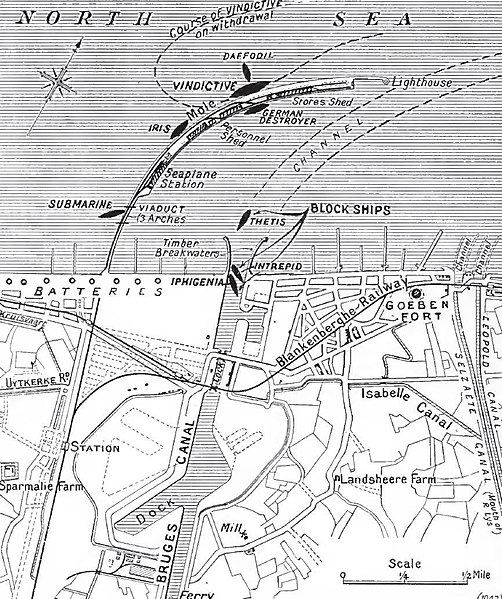The Zeebrugge Raid on 23 April 1918, was an attempt by the Royal Navy to block the Belgian port of Bruges-Zeebrugge. The British intended to sink obsolete ships in the canal entrance, to prevent German vessels from leaving port. The port was used by the Imperial German Navy as a base for U-boats and light shipping, which were a threat to Allied control of the English Channel and southern North Sea. Several attempts to close the Flanders ports by bombardment failed and Operation Hush, a 1917 plan to advance up the coast, proved abortive. As ship losses to U-boats increased, finding a way to close the ports became urgent and the Admiralty became more willing to consider a raid.
Graphic depiction of the raid from Popular Science magazine, July 1918
Bruges docks and the approaches from Ostend and Zeebrugge
Sint-Petrus-en-Pauluskerk, Ostend
The blocking of Zeebrugge (true order is Intrepid, Iphigenia and Thetis south to north)
The Port of Zeebrugge is a large container, bulk cargo, new vehicles and passenger ferry terminal port on the North Sea. The port is located in the municipality of Bruges, West Flanders in the Flemish Region of Belgium, handling over 50 million tonnes of cargo annually.
Satellite image of Bruges and the Port
Outer port of Zeebrugge
The cruise terminal of Zeebrugge
Mærsk containership.








